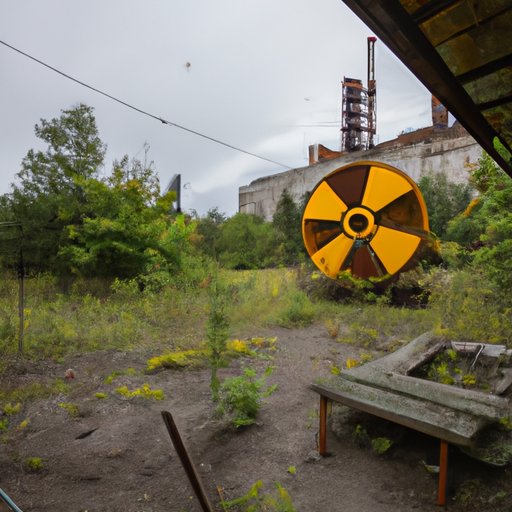Introduction
On April 26, 1986, a catastrophic nuclear accident occurred at the Chernobyl power plant in Ukraine, then part of the Soviet Union. A reactor exploded, leading to the release of enormous amounts of radioactive material into the atmosphere. This event has become known as the Chernobyl nuclear disaster, and it is widely regarded as the worst nuclear accident in history.
In the wake of this tragedy, there has been a need to understand the full extent of its impact on downwind communities. In order to do so, it is necessary to examine how far the radiation from Chernobyl spread and what long-term effects this radiation exposure may have had on the people and environment.

Examining the Impact of the Chernobyl Nuclear Disaster on Downwind Communities
In order to determine the distance radioactive contamination traveled from Chernobyl, scientists have used a variety of measurements. These include air sampling, soil sampling, and gamma spectrometry. Through these measurements, scientists were able to track the spread of radioactive material from Chernobyl, including the presence of caesium-137, iodine-131, and strontium-90.
As a result of these measurements, it was determined that radioactive contamination from the Chernobyl disaster traveled hundreds of miles from the site of the accident. Areas in Belarus, Russia, and Ukraine were the most heavily impacted by the radioactive fallout, but contamination was also detected in other parts of Europe, including Sweden and Norway.
Exploring the Long-Term Effects of Radiation Exposure From Chernobyl
In addition to examining the spread of radiation from Chernobyl, it is important to explore the long-term effects of radiation exposure. As a result of the Chernobyl disaster, thousands of people have been exposed to potentially harmful levels of radiation. The health impacts of radiation exposure vary depending on the individual, but they can include increased risk of cancer, infertility, birth defects, and other health problems.
The environmental impacts of radiation exposure from Chernobyl are also far-reaching. Radioactive material has contaminated soil, water, and vegetation in the surrounding area, leading to the displacement of thousands of people and the destruction of wildlife habitats. These effects are likely to linger for decades to come.
The Global Reach of Chernobyl: Uncovering the True Extent of Its Contamination
Though the Chernobyl nuclear disaster occurred in Ukraine, its effects have extended far beyond the borders of the nation. Scientists have investigated the spread of radioactive contamination beyond Chernobyl and found that it has reached other parts of Europe as well as Asia and North America. This has resulted in a vast array of economic and social effects that have affected not only those living near the Chernobyl site, but people living thousands of miles away.
The true extent of the Chernobyl disaster’s impact is still being uncovered today. As more research is conducted, it is becoming increasingly clear that the effects of this tragedy have been felt around the world.
Conclusion
The Chernobyl nuclear disaster of 1986 was one of the worst industrial accidents in history, resulting in the release of massive amounts of radioactive material into the atmosphere. Scientists have used a variety of measurements to determine the distance the radiation from Chernobyl traveled, which was found to be hundreds of miles. This radiation exposure has had a wide range of health and environmental impacts, and its effects have been felt around the world.
The Chernobyl nuclear disaster has left a lasting legacy that will continue to be felt for generations to come. Its impact cannot be overstated, and it serves as a reminder of the dangers of nuclear energy.
(Note: Is this article not meeting your expectations? Do you have knowledge or insights to share? Unlock new opportunities and expand your reach by joining our authors team. Click Registration to join us and share your expertise with our readers.)
